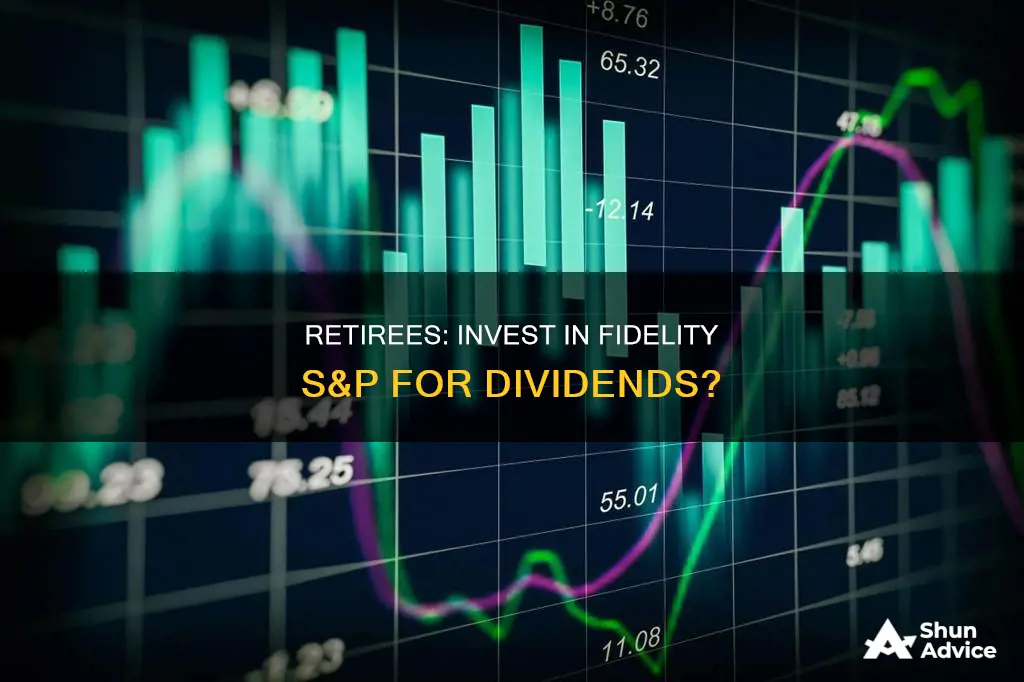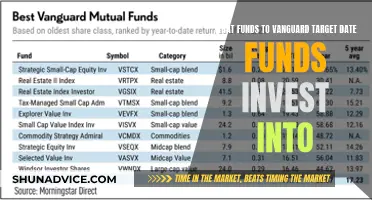
Dividend index funds are a great option for retirees looking for a steady income stream. These funds, which can be either mutual funds or ETFs, focus on stocks that pay dividends, making them attractive to investors seeking regular income. While these funds may not offer high growth potential, they provide stable returns and are ideal for those seeking lower-risk investments.
Fidelity, a well-known investment company, offers a range of mutual funds, including the Fidelity 500 Index Fund (FXAIX), which provides exposure to the S&P 500 index. With a low expense ratio of 0.015%, this fund has delivered an impressive annualized return of 11.04% since its inception in February 1988.
For retirees, the decision to invest in the Fidelity S&P Index Fund depends on their financial goals and risk tolerance. The fund's low fees and solid returns make it a compelling option for those seeking long-term investments with steady income. However, it's important to remember that past performance doesn't guarantee future results, and conducting thorough research before investing is always advisable.
| Characteristics | Values |
|---|---|
| Fund Name | Fidelity 500 Index Fund |
| Ticker | FXAIX |
| Investment Style | Passive |
| Investment Vehicle | Mutual Fund |
| Benchmark Index | S&P 500 |
| Investment Minimum | None |
| Expense Ratio | 0.015% |
| Inception Date | 17/02/1988 |
| Annualised Return | 11.04% |
| Investment Options | Over 500 large-cap U.S. stocks |
| Investment Amount | $10,000 |
What You'll Learn

Fidelity 500 Index Fund (FXAIX)
The Fidelity 500 Index Fund (FXAIX) is an excellent investment option for retirees seeking stable dividend income and long-term capital appreciation. Here's a detailed overview:
Investment Objective and Strategy
The Fidelity 500 Index Fund (FXAIX) is a mutual fund that aims to replicate the performance of the S&P 500 Index, one of the most widely recognized stock market indices in the United States. The fund seeks to provide results that align with the performance of large common stocks publicly traded in the US market. It invests at least 80% of its assets in the stocks included in the S&P 500, covering a diverse range of sectors. This diversification helps protect against volatility as it is not focused on any single industry.
Performance and Returns
As of November 27, 2023, the fund had assets totaling nearly $407.60 billion invested in 508 different holdings. Over the past year, the fund has returned 10.14%, with a 1-year percentage change of 36.33%. Looking at longer time frames, the fund has delivered consistent returns: 10.35% over the past three years, 11.00% over five years, and 11.17% over the last decade. The fund's expense ratio is an impressive 0.02%, significantly lower than the category average of 0.5% to 0.85%.
Suitability for Retirees
The FXAIX fund is well-suited for retirees for several reasons. Firstly, the fund provides stable dividend income, making it attractive for those seeking regular cash flow in their retirement years. Secondly, the fund's broad diversification across sectors helps reduce risk and protect against market downturns. Additionally, the fund has a strong long-term performance track record, providing steady returns over a 5- to 10-year period, which is a crucial consideration for retirees looking for consistent income.
Risks and Considerations
While the FXAIX fund offers stability and diversification, it's important to remember that it is still subject to market risks and volatility. The fund's performance could be influenced by economic and political factors that impact the broader stock market. Additionally, as a passively managed fund, its performance might be lower compared to actively managed funds. Therefore, retirees should carefully consider their risk tolerance and investment goals before investing.
Travel Fund Investment Strategies: Making Your Money Work Harder
You may want to see also

Fidelity Total Market Index Fund (FSKAX)
The Fidelity Total Market Index Fund (FSKAX) is an open-ended investment fund with a large market cap and a growth investment style. As of 2 October 2024, the fund has seen a positive change of 0.03% and a 1-year change of +34.28%.
The fund's top 5 holdings as of 31 August 2024, are:
- Microsoft Corp (MSFT:NSQ)
- NVIDIA Corp (NVDA:NSQ)
- Amazon.com Inc (AMZN:NSQ)
- Meta Platforms Inc (META:NSQ)
These top 5 holdings make up 22.24% of the portfolio. The fund normally invests at least 80% of its assets in common stocks included in the Dow Jones U.S. Total Stock Market Index, which represents the performance of a broad range of U.S. stocks.
The fund's manager uses statistical sampling techniques based on factors such as capitalization, industry exposures, dividend yield, price/earnings (P/E) ratio, price/book (P/B) ratio, and earnings growth to attempt to replicate the returns of the index using a smaller number of securities.
Index funds, in general, are popular with investors because they offer ownership of a wide variety of stocks, greater diversification, and lower risk, usually at a low cost. They are also good for beginners as they do not require in-depth knowledge of investing or financial markets to make good returns.
When considering investing in index funds, it is important to research and analyze the fund, decide which index fund to buy, and then purchase it either directly from the fund company or through a broker. It is also crucial to keep in mind that the performance of index funds can fluctuate in the short term, and they are meant to be held for the long run.
Lumpsum Mutual Fund Investment: Is It Worth the Risk?
You may want to see also

Fidelity Zero Large Cap Index Fund (FNILX)
The Fidelity ZERO Large Cap Index Fund (FNILX) is a mutual fund that offers broad diversification and low costs, making it an attractive option for investors seeking a core holding in their portfolio. With no expense ratio, investors can access the fund without incurring any ongoing fees, which is a significant advantage over other investment options.
The fund aims to replicate the performance of the Fidelity U.S. Large Cap Index, providing exposure to a basket of large-cap stocks. As of October 24, 2024, the fund had total assets of 11.0 billion dollars, with 33.4% of its assets in the top 10 holdings, including Meta Platforms Inc Class A, Alphabet Inc Class A and Class C, and Berkshire Hathaway Inc Class B. The fund's one-day return on October 24, 2024, was 0.24%, with a Net Asset Value (NAV) of 20.76 dollars.
However, it is important to note that the fund may not be suitable for those seeking high growth or specific industry exposure. The fund's performance may also fluctuate with the market, and it is always advisable to conduct thorough research and consult with a financial professional before making any investment decisions.
Series C Funding: Strategies for Successful Investment
You may want to see also

Fidelity Magellan Fund (FMAGX)
The Fidelity Magellan Fund (FMAGX) is designed to help meet investment objectives and asset allocation needs. Here is an overview of the key details regarding this fund:
Investment Objective:
The fund aims to seek capital appreciation, which means it focuses on investing in companies that are expected to increase in value over time. This strategy targets long-term growth rather than immediate income.
Strategy:
The fund employs a flexible strategy, investing in both domestic and international companies across various sectors and industries. It diversifies its holdings to manage risk effectively.
Risk:
The fund's risk level is not explicitly mentioned, but it is important to note that all investments carry some degree of risk. The fund's performance may vary, and there is a possibility of losing money. It is essential for investors to carefully consider their risk tolerance before investing.
Performance:
The fund's performance details are not readily available. However, it is important to evaluate the fund's historical performance to assess its potential for future returns.
Expenses:
The fund's expense ratio, which represents the ongoing fees associated with the fund, is not explicitly stated. Expense ratios are crucial in understanding the overall cost of investing in a mutual fund or ETF.
Top Holdings:
The fund's top holdings, which represent the largest investments within the fund, are not disclosed in the provided source. Analyzing the top holdings can provide insight into the fund's focus and diversification.
Minimum Investment:
The minimum investment amount required to invest in the Fidelity Magellan Fund (FMAGX) is not specified. It is important to review the fund's prospectus or contact Fidelity for detailed information regarding the minimum investment requirements.
Management:
The fund managers responsible for overseeing the Fidelity Magellan Fund (FMAGX) are not listed. Fund managers play a crucial role in making investment decisions and implementing the fund's strategy.
In summary, the Fidelity Magellan Fund (FMAGX) offers a flexible investment approach, targeting capital appreciation by investing in a diverse range of companies. However, the fund's performance, expenses, and management details are not readily available, making it essential for investors to conduct further research before making any investment decisions.
Paytm's Mutual Fund Investment Safety: What You Need to Know
You may want to see also

Fidelity Contrafund (FCNTX)
FCNTX has a Morningstar Medalist Rating and an exceptional portfolio manager. It has total net assets of $111.67 billion and a net expense ratio of 0.54%. Its 52-week average return is 51.17% and it has a 1-day return of -1.34%.
FCNTX's top holdings as of August 31, 2024, include Meta Platforms Inc Class A, Berkshire Hathaway Inc Class A, and Alphabet Inc Class A.
Invest in Index Funds: HDFC Securities Guide
You may want to see also
Frequently asked questions
Dividend index funds are mutual funds or ETFs that focus on high-dividend-paying stocks. They are most attractive to income-seeking investors as they provide solid dividend yields and diversification across a wide range of stocks.
For most people, index funds and ETFs are functionally the same. However, ETFs are generally more liquid and trade throughout the day like stocks, whereas index funds can only be bought or sold at the end of the day's trading. ETFs also often have lower buy-ins than mutual funds.
The S&P 500 index is a flagship product of S&P Global, which provides data and insights on market performance. It is composed of the 500 largest U.S. companies when ranked by market value. The index is considered a good proxy for the performance of "the stock market" as a whole.
The Fidelity 500 Index Fund (FXAIX) is one of the cheapest index funds in Fidelity's lineup, with an expense ratio of 0.015%. It provides exposure to the S&P 500 index and has delivered an annualized return of 11.04% since its inception in February 1988.







